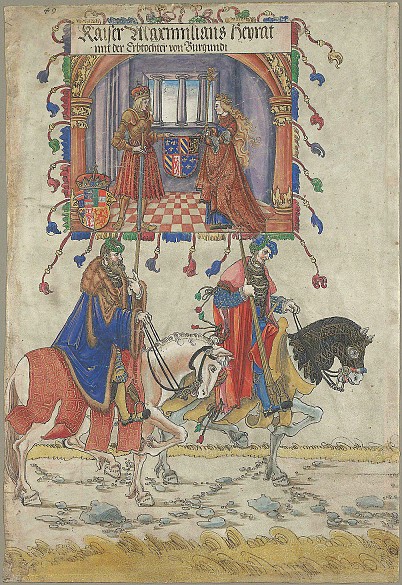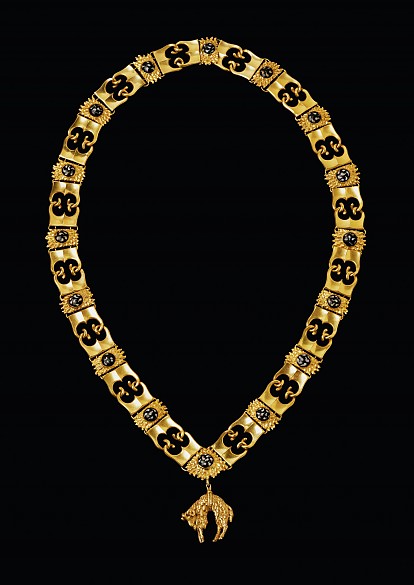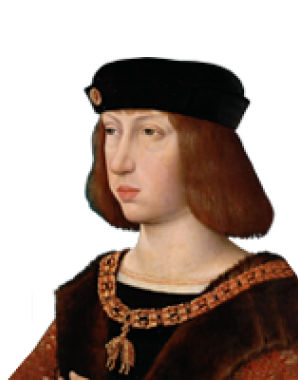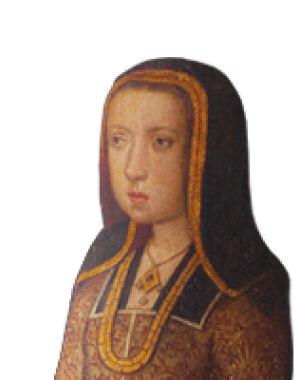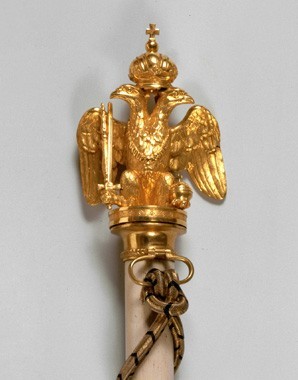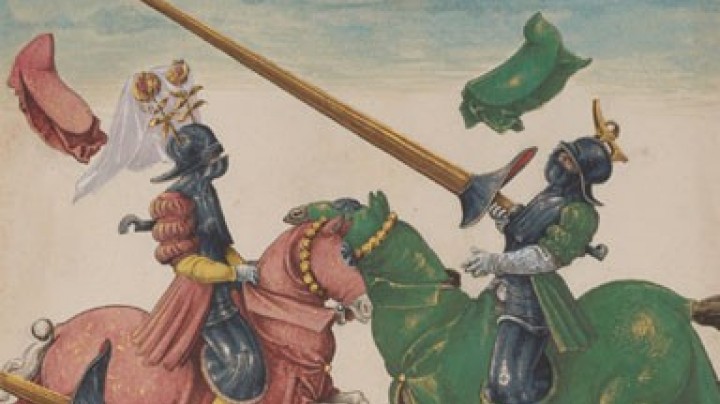Maximilian and the Burgundian inheritance
Maximilian’s marriage to Mary, heiress of the dukes of Burgundy, formed the foundation for the ascent of the House of Habsburg over the following generations.
A possible matrimonial alliance between the House of Habsburg and the dukes of Burgundy had been suggested on the initiative of the Pope as early as 1463, but concrete negotiations were not begun between Maximilian’s father Frederick and Duke Charles the Bold until 1473. A youth of fourteen at the time, Maximilian encountered the magnificence of the Burgundian ducal court for the first time, opening up a new world for him which presented a stark contrast to the rather staid court of his Habsburg father.
The duke’s only daughter, Mary, was heiress to one of the most important complex of territories in the late medieval era, and had increasingly become the focus of international politics when it became clear that she would remain her father’s only offspring.
In 1473 the negotiations remained open for the time being: Duke Charles had made major demands, asking among other things in return for the hand of his daughter the title of Roman King or at the very least the elevation of Burgundy to the status of a kingdom. Soon recognizing that he held the worse hand, Emperor Frederick, who did not cut the best of figures beside the proud duke and his magnificent court, abruptly broke off the negotiations. The emperor left Trier, where the encounter had taken place, unceremoniously in the dead of night.
It was not until the sudden death of Charles in the Battle of Nancy in 1477 that Maximilian seized the opportunity to press his son’s suit with Mary, who was now the richest heiress in Europe. Mary agreed, and the wedding was celebrated with all haste, since conflicts were inevitable. The main opponent of the union was France: parts of the dukedom of Burgundy were French crown fiefs and automatically reverted to France upon the extinction of the male Burgundian line. However, King Louis XI and his son and successor, the young and no less ambitious King Charles VIII, regarded themselves as the heirs to other Burgundian territories as well. This dispute over the inheritance led to long-drawn-out wars in the years 1477 to 1482 and 1487 to 1493.
Maximilian’s rule in the Burgundian lands themselves did not go unchallenged, especially after Mary’s early death from a riding accident in 1482. Maximilian was confronted with opposition to his rule from the nobility and the rich trading cities. Like his role model and father-in-law Duke Charles, the young Habsburg was aiming at monarchical rule, but as a foreigner enjoyed far less acceptance. Furthermore, his notorious lack of money set close limits on his ability to follow through with his plans. Sections of the nobility supported French claims on Burgundy, and the Estates were laying claim to the wardship of the children from Maximilian’s marriage to Mary of Burgundy, Philip and Margaret. The latter was handed to France in her infancy to be the future wife of the dauphin Charles (later King Charles VIII). Margaret was here little more than an accoutrement to her dowry, which included significant parts of the Burgundian realm.
Successes on the battle field, including his victory over a French army at Guinegate in 1479, were followed by political defeats. In 1488 Maximilian was held prisoner by the citizens of Bruges for several months and was compelled to assent to France’s tutelary sovereignty over Burgundy, as demanded by the pro-French Estates. He was also forced to hand over the regency of Flanders to a council of the Estates.
In 1493 peace was finally concluded with Charles VIII of France at Senlis. Maximilian retained most of the Burgundian domains within the bounds of the Holy Roman Empire with the exception of the French crown fiefs.
The cultural impulses of the Burgundian inheritance had a profound influence on Maximilian and consequently the Habsburg dynasty. The sophisticated culture of the Habsburg court in the Early Modern era, in particular the court ceremonial, which propagated an excessive ruler cult, were modelled on the Burgundian ducal court. The highest honour at the Habsburg court, the Order of the Golden Fleece, was also a legacy of Burgundy.
